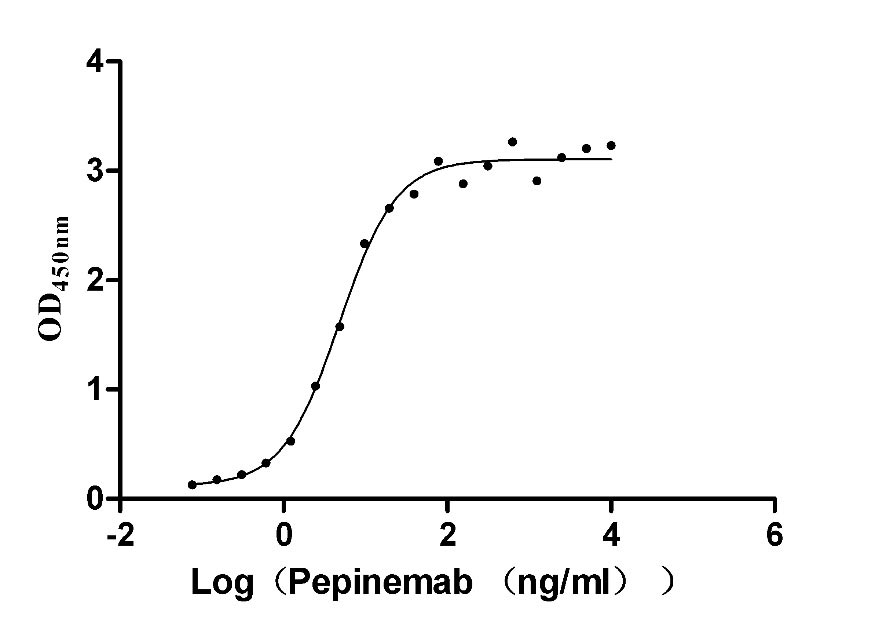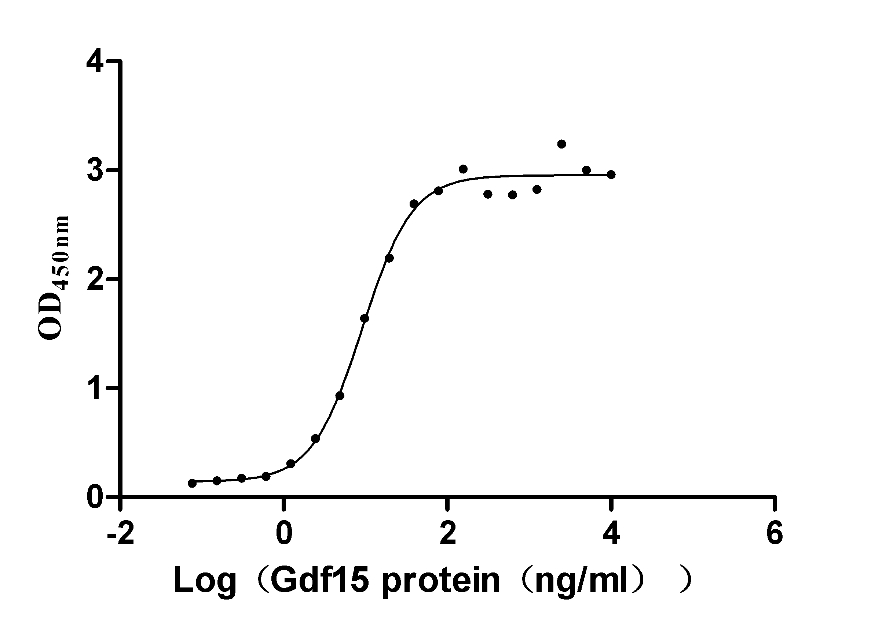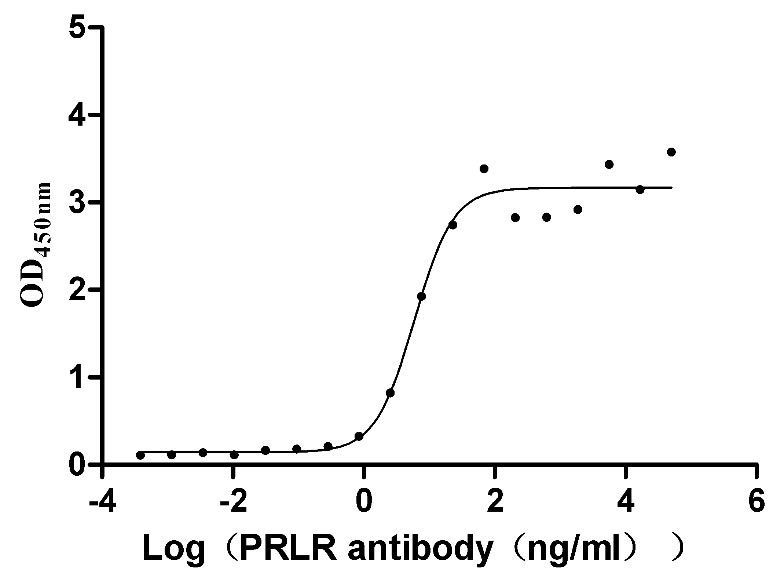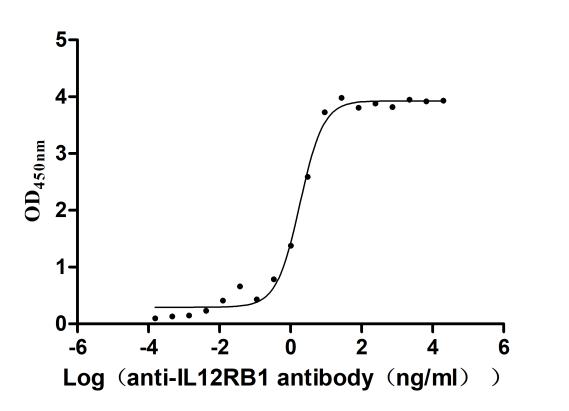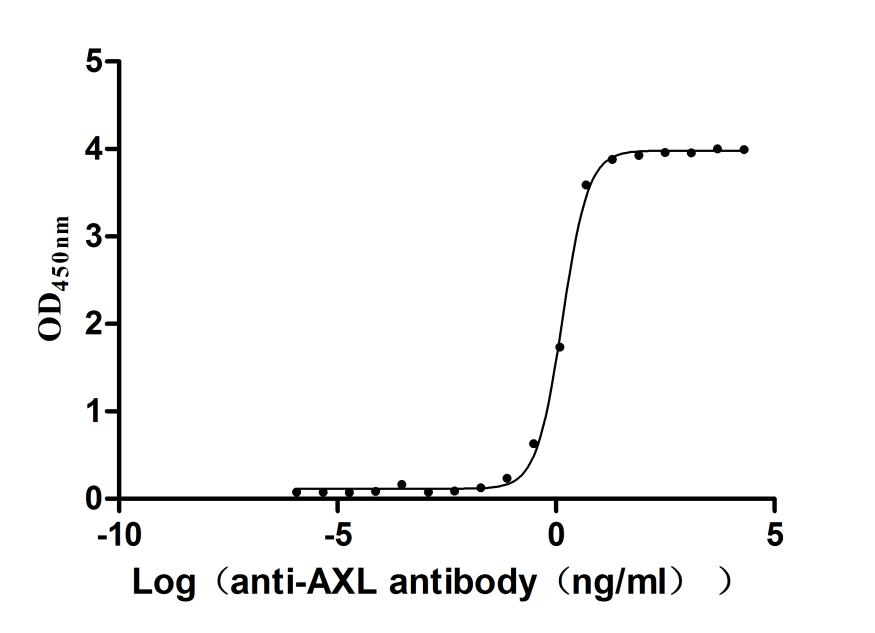Recombinant Human High affinity immunoglobulin epsilon receptor subunit beta (MS4A2)
-
中文名稱:Recombinant Human High affinity immunoglobulin epsilon receptor subunit beta (MS4A2)
-
貨號:CSB-CF015013HU
-
規(guī)格:¥9720
-
圖片:
-
其他:
產(chǎn)品詳情
-
純度:Greater than 85% as determined by SDS-PAGE.
-
生物活性:Not Test
-
基因名:
-
Uniprot No.:
-
種屬:Homo sapiens (Human)
-
蛋白長度:Full Length
-
來源:in vitro E.coli expression system
-
分子量:32.6 kDa
-
表達(dá)區(qū)域:1-244aa
-
氨基酸序列MDTESNRRANLALPQEPSSVPAFEVLEISPQEVSSGRLLKSASSPPLHTWLTVLKKEQEFLGVTQILTAMICLCFGTVVCSVLDISHIEGDIFSSFKAGYPFWGAIFFSISGMLSIISERRNATYLVRGSLGANTASSIAGGTGITILIINLKKSLAYIHIHSCQKFFETKCFMASFSTEIVVMMLFLTILGLGSAVSLTICGAGEELKGNKVPEDRVYEELNIYSATYSELEDPGEMSPPIDL
Note: The complete sequence may include tag sequence, target protein sequence, linker sequence and extra sequence that is translated with the protein sequence for the purpose(s) of secretion, stability, solubility, etc.
If the exact amino acid sequence of this recombinant protein is critical to your application, please explicitly request the full and complete sequence of this protein before ordering. -
蛋白標(biāo)簽:N-terminal 10xHis-tagged
-
產(chǎn)品提供形式:Liquid or Lyophilized powder
Note: We will preferentially ship the format that we have in stock, however, if you have any special requirement for the format, please remark your requirement when placing the order, we will prepare according to your demand. -
緩沖液:If the delivery form is liquid, the default storage buffer is Tris/PBS-based buffer, 5%-50% glycerol. If the delivery form is lyophilized powder, the buffer before lyophilization is Tris/PBS-based buffer, 6% Trehalose, pH 8.0.
-
復(fù)溶:We recommend that this vial be briefly centrifuged prior to opening to bring the contents to the bottom. Please reconstitute protein in deionized sterile water to a concentration of 0.1-1.0 mg/mL.We recommend to add 5-50% of glycerol (final concentration) and aliquot for long-term storage at -20℃/-80℃. Our default final concentration of glycerol is 50%. Customers could use it as reference.
-
儲存條件:Store at -20°C/-80°C upon receipt, aliquoting is necessary for mutiple use. Avoid repeated freeze-thaw cycles.
-
保質(zhì)期:The shelf life is related to many factors, storage state, buffer ingredients, storage temperature and the stability of the protein itself.
Generally, the shelf life of liquid form is 6 months at -20°C/-80°C. The shelf life of lyophilized form is 12 months at -20°C/-80°C. -
貨期:Basically, we can dispatch the products out in 3-7 working days after receiving your orders. Delivery time may differ from different purchasing way or location, please kindly consult your local distributors for specific delivery time.
-
注意事項:Repeated freezing and thawing is not recommended. Store working aliquots at 4℃ for up to one week.
-
Datasheet & COA:Please contact us to get it.
相關(guān)產(chǎn)品
靶點詳情
-
功能:High affinity receptor that binds to the Fc region of immunoglobulins epsilon. Aggregation of FCER1 by multivalent antigens is required for the full mast cell response, including the release of preformed mediators (such as histamine) by degranulation and de novo production of lipid mediators and cytokines. Also mediates the secretion of important lymphokines. Binding of allergen to receptor-bound IgE leads to cell activation and the release of mediators responsible for the manifestations of allergy.
-
基因功能參考文獻(xiàn):
- Using immunohistochemistry, we validated that MS4A2, the beta subunit of the IgE receptor expressed on mast cells, is a favorable prognostic indicator and show that MS4A2 gene expression is an independent prognostic marker for early-stage lung cancer patient survival. PMID: 28775209
- in patients with allergic rhinitis without asthma, the FCER1B rs569108 and rs512555 polymorphisms are associated with increased risk of developing allergic rhinitis and with lower IgE levels. PMID: 26792385
- study found a difference in the frequencies of genotypes of FcvarepsilonRIbeta subunit int 2 in allergic rhinitis patients and controls. The FcvarepsilonRIbeta subunit int 2 gene polymorphism was found to be associated with allergic rhinitis in the Polish cohort PMID: 24981302
- MS4A2 was differentially expressed between Fibromyalgia patients and healthy controls. PMID: 27157394
- no association between gene polymorphism and chronic spontaneous urticaria in Kashmiri population PMID: 24953255
- FcepsilonRIbeta -109C/T and IFN-gamma 874T/A polymorphisms may be influencing factors for asthma in the Asian population PMID: 25530133
- The results explain how initial membrane interactions of clustered IgE-Fcepsilon RI complexes lead to downstream cellular responses. PMID: 25658351
- Data indicated that the MS4A2 gene E237G variant may be a risk factor for developing atopic asthma and the promoter -109T allele is a potential risk factor of asthma in Asians. PMID: 24495860
- Cytoplasmic FcepsilonRIbeta, which is not co-localized with FcepsilonRIalpha, may function as a negative regulator, as it can capture important signalling molecules such as Lyn. PMID: 24118172
- t-FcepsilonRIbeta mediates Ca2+ -dependent microtubule formation, which promotes degranulation and cytokine release. PMID: 23643722
- The interaction between Lyn and FcepsilonRIbeta is indispensable for FcepsilonRI-mediated human mast cell activation. PMID: 22845063
- Demethylation of specific regulatory elements within the FCER1G locus contributes to FcepsilonRI overexpression on monocytes from patients with atopic dermatitis. PMID: 22150093
- Polymorphisms in the Fc epsilon R1beta gene confer susceptibility to atopy in Korean children and may have a disease-modifying effect on airways in asthmatic patients. PMID: 19288130
- No associations with total and specific IgE levels as well as allergic sensitization were seen for FCER1B and FCER1G PMID: 20028371
- Methylation levels at the AluSp repeat analysed in MS4A2 were inconsistent with classical imprinting mechanisms and did not associate with atopy status PMID: 19796196
- Significant associations of single nucleotide polymorphisms with wheeze in the past year were detected in only four genes (IL4R, TLR4, MS4A2, TLR9). Variants in IL4R and TLR4 were also related to allergen-specific IgE, but not for MS4A2 and TLR9. PMID: 20085599
- Gene expression profiling after stimulation via high-affinity Fcepsilon receptor I (FcepsilonRI), showed the transcriptional levels of several CC chemokines were markedly increased. PMID: 12393595
- Products of the beta gene may control the level of surface expression, influencing susceptibility to allergies. PMID: 12753743
- The data suggested that the Gly237Gly genotype of the Fc epsilon RI beta gene conferred genetic susceptibility to allergic asthma in Chinese, which affected the total plasma IgE levels in the allergic asthma patients. PMID: 12903039
- A statistically significant association was foundbetween atopy and FcERIint2 variant polymorphism FcERIint2 polymorphism is related to atopy and may influence its development. PMID: 15087090
- The genomic region encompassing the beta-chain has been linked to atopy and a number of polymorphisms within the FcepsilonRIbeta gene are associated with various atopic diseases. PMID: 15316148
- FcepsilonRI beta-chain gene expression is down-regulated by a transcription factor, MZF-1, adn its cofactor FHL-3. PMID: 15453830
- Single nucleotide polymorphisms (SNPs) in the Fc epsilon receptor I beta promoter are causally linked with atopy via regulation of Fc epsilon RI expression. PMID: 15528387
- The speed of allergic symptom generation depends on the degree of IgE Fc epsilon receptor type I receptor triggering. PMID: 17088130
- in the Korean general population, airway hyper-responsiveness is significantly associated with the E237G polymorphism of FcepsilonRI-beta, which results in an intolerant amino acid substitution PMID: 17430357
- FcepsilonRIbeta E237G allele may have a protective role in wheezing illness among Taiwanese schoolchildren, depending on airway oxidative stress levels. PMID: 18269668
- The -237T>G polymorphism may be associated with the rate of atopy, which in turn could increase the release of histamine from basophils and may lead to the development of the aspirin-intolerant chronic urticaria PMID: 18534082
- PLSCR1 is a novel amplifier of FcepsilonRI signaling that acts selectively on the Lyn-initiated LAT/phospholipase Cgamma1/calcium axis, resulting in potentiation of a selected set of mast cell responses PMID: 18579528
- Fcgr4 is a mouse IgE receptor that resembles macrophage MS4A2 protein in humans and promotes IgE-induced lung inflammation. PMID: 18949059
- A promoter-dependent mechanism with altered transcriptional regulation of FcepsilonRIbeta may be involved for its association with asthma. PMID: 19218813
顯示更多
收起更多
-
亞細(xì)胞定位:Membrane; Multi-pass membrane protein.
-
蛋白家族:MS4A family
-
組織特異性:Found on the surface of mast cells and basophils.
-
數(shù)據(jù)庫鏈接:
Most popular with customers
-
Recombinant Human Semaphorin-4D (SEMA4D), partial (Active)
Express system: Mammalian cell
Species: Homo sapiens (Human)
-
Recombinant Mouse GDNF family receptor alpha-like (Gfral), partial (Active)
Express system: Mammalian cell
Species: Mus musculus (Mouse)
-
Recombinant Mouse Prolactin receptor (Prlr), partial (Active)
Express system: Mammalian cell
Species: Mus musculus (Mouse)
-
Recombinant Human Interleukin-12 receptor subunit beta-1(IL12RB1),partial (Active)
Express system: Mammalian cell
Species: Homo sapiens (Human)
-
Recombinant Human Tyrosine-protein kinase receptor UFO(AXL),partial (Active)
Express system: Mammalian cell
Species: Homo sapiens (Human)



